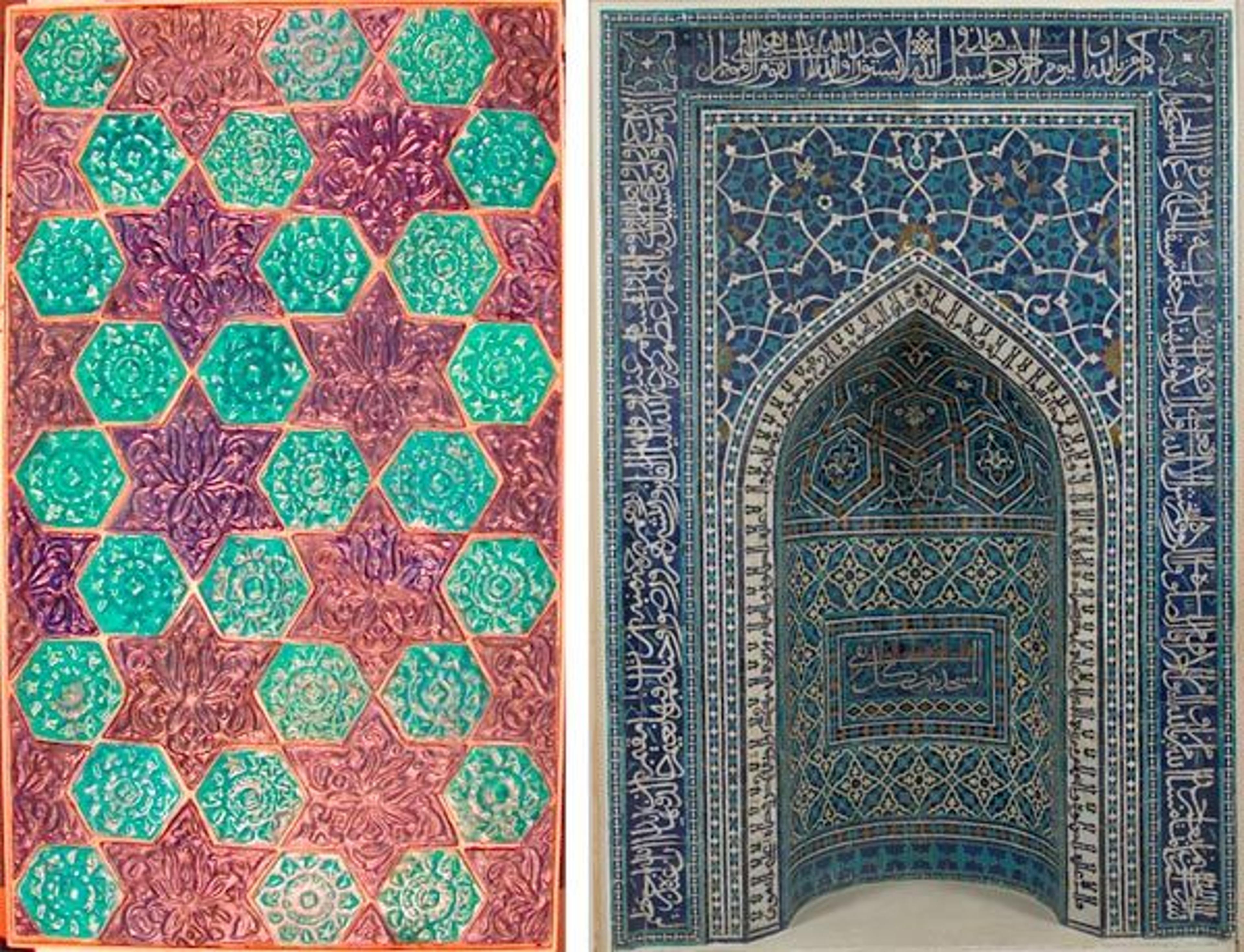Left: Tile Panel, late 13th–14th century. Iran, Nishapur. Islamic. Stonepaste; molded under a transparent glaze. The Metropolitan Museum of Art, New York, Rogers Fund, 1937 (37.40.27). Right: Mihrab (Prayer Niche), A.H. 755/A.D. 1354-55. Iran, Isfahan. Islamic. Mosaic of polychrome-glazed cut tiles on stonepaste body; set into mortar. The Metropolitan Museum of Art, New York, Harris Brisbane Dick Fund, 1939 (39.20)
«The Islamic world is famous for its stunning tilework: lavish blue and turquoise ceramic tiles featuring an almost infinite array of geometric patterns. This tilework has adorned the walls of mosques, tombs, and the homes of the wealthy, enhancing the beauty of these spaces, for centuries.»
In these works of art, myriad shapes are combined, repeated, and interlaced to create abstract patterns that are astoundingly intricate. They emphasize the importance of structure and order, but also freedom. What is so mind-blowing about these repeating patterns is that they are not, in fact, repeated. They just look repeated.
Most patterns are periodic, meaning that if you cut out a section you could lay it directly over another section and the two would align perfectly. Some shapes, like hexagons, make only periodic patterns, but some shapes can make both periodic and nonperiodic ones. It wasn't until the 1970s that mathematicians discovered that two shapes—called kites and darts—make only a nonperiodic pattern (called a Penrose pattern) when used together. Though the shapes themselves are repeated, the pattern is not. As this pattern expands over a larger area, the ratio of kites to darts approaches the golden ratio, which is found throughout nature itself. What I find so amazing is that, though modern mathematicians didn't discover this until recently, the ceramicists from the Islamic world were using these shapes centuries ago to decorate their architecture.
Related Link
Department of Islamic Art
